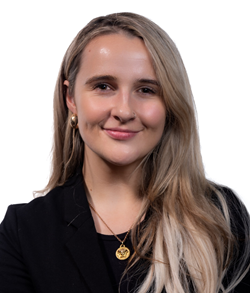2024 | Volume 25 | Issue 4

A recent webinar—Putting evidence into practice, March 2024—hosted by the South Australian Audit of Surgical Mortality (SAASM) explored how research influences surgical practice. One of the presenters, Ellie Treloar, is investigating human factors in surgery and how the conduct of surgical ward rounds can be improved by taking inspiration from the aviation industry. Ellie is currently completing her PhD at The Queen Elizabeth Hospital (TQEH) before studying medicine.
Over the past 10 years, the TQEH Surgical Science Research Group has pursued better understanding and improving the non-technical skills of surgeons, both in and out of the operating theatre.
Ellie’s review of previous literature on this topic found that ‘the highly chaotic nature of the surgical ward round, consisting of variable staff members, length and execution leads to difficulty in obtaining high quality research and a lack of best practice being featured in medical textbooks or university curriculums.’
Most of the literature focused on the introduction of a checklist during ward rounds, which stems from the success of the Surgical Safety Checklist in theatre. Based on this systematic review, Ellie and the Surgical Science Research Group concluded that although checklists did improve documentation rates of items in case notes, a question remained as to the quality of those case notes.
An independent study by Ellie and the Research Group sought to confirm if use of a checklist during ward rounds improved the accuracy of case note documentation. They found that a third of important information discussed was not recorded in the case notes and 11 per cent was recorded incorrectly. They further found that the use of a checklist had no impact on the accuracy of case notes (despite showing improved rates of documentation).
The researchers are currently working to introduce an intervention to improve the accuracy of case notes, thereby improving patient and staff satisfaction and patient outcomes. Drawing inspiration from the aviation industry, a ‘sterile cockpit’ approach has been implemented, which aims to focus attention during ward rounds and introduce verbal confirmation of the case notes being documented.
This approach was first used in the aviation industry, where it was designed to keep crew members from performing non-essential duties during critical moments of air transport to prevent errors. The TQEH study involved audiovisual recordings of surgical ward rounds at random (pre-intervention), implementing the sterile cockpit design, followed by recording ward rounds post-intervention.
Data is currently being collected and analysed; however, the initial data suggest that the time pressure experienced by staff during ward rounds, combined with a lack of best-practice guidelines, results in inaccurate documentation (consequently affecting patient care). Suggestions to address this include regulated/protected time to spend on the ward round and ensuring that a nurse is present.
The advent of electronic medical records (EMR) has introduced fresh challenges. While the introduction of EMR provides quicker access to patient and hospital information, and subsequently improved information-sharing, Ellie notes that it also alters team dynamics by shifting attention from the patient. Moreover, it contributes to inaccurate documentation through use of the copy–paste function. Their research has found ‘that in 11 per cent of ward round encounters, there was a serious discrepancy in case note plans due to copy and paste errors.’
The researchers believe that improvements in the way ward rounds are conducted can be achieved without cost and will result in significant improvements in patient outcomes, including reduced discharge delay.
With her PhD almost complete, Ellie’s attention is soon to turn to her next goal of completing her Doctor of Medicine (MD) in Sydney. We look forward to seeing what further ground she can break as she furthers her career into clinical practice.
To hear more about Ellie’s research on surgical ward rounds, you can check out her presentation from the SAASM webinar here.